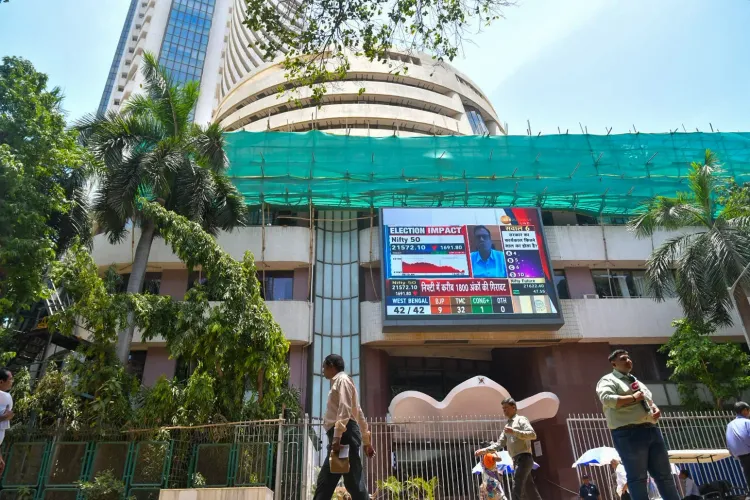Why Did Indian Markets End Marginally Lower This Week?

Synopsis
Key Takeaways
- Indian equity markets have declined for four consecutive weeks.
- Subdued Q1 earnings and global sentiment are key factors.
- Nifty50 index breached crucial support levels.
- India-UK free trade agreement offers potential sector benefits.
- RBI reports a resilient domestic economy amidst global challenges.
Mumbai, July 26 (NationPress) The Indian equity market concluded the week down by 0.26 percent, marking the fourth consecutive week of decline, primarily due to dismal Q1 earnings and a cautious global sentiment, analysts reported on Saturday.
The Nifty50 index fell below the crucial level of 24,900, closing at 24,837 on Friday. Foreign Institutional Investors (FIIs) continued to be net sellers for five consecutive sessions, indicating widespread selling pressure. Mid-cap and small-cap indices experienced more significant corrections, lagging behind the benchmark.
According to Mandar Bhojane from Choice Equity Broking Private Limited, “Technically, the Nifty is trading below its 20- and 50-day EMAs, signaling a bearish short-term trend. The next immediate support level to monitor is at 24,750. If this support fails, the index may decline further towards 24,580, which is close to the 100-day EMA — a crucial technical support zone.”
In other news, the United States’ new legislation on stablecoins, the Genius Act, could significantly alter capital flows in India, China, and other economies, potentially requiring banks to permit transactions in stablecoins via subsidiaries.
Despite ongoing tariff uncertainties, the recently signed India-UK free trade agreement is a positive development for various sectors, including textiles, automobiles, pharmaceuticals, and jewelry, which stand to gain from reduced or eliminated tariffs.
Vinod Nair, Head of Research at Geojit Investments Limited, commented, “The finalization of trade agreements between the US-Japan and India-UK represents a significant move towards reducing global trade barriers. A resolution of the US-India mini trade deal by August 1 could further alleviate investor concerns.”
Private banks such as ICICI and HDFC Bank reported stable Q1 earnings. Enhanced fundamentals and valuations bolstered PNB Housing Finance and Bajaj Finance.
“However, lagging sectors like IT and financials faced challenges due to subdued guidance and emerging concerns around asset quality. The overall lackluster earnings performance may pose a challenge to the sustainability of the current premium valuations across benchmark indices, leading to expected consolidation in the near future,” Nair stated.
While the global economy faces volatility, India's macroeconomic indicators present a cautiously optimistic outlook. The latest bulletin from the Reserve Bank of India (RBI) reflects a domestic economy resilient against global challenges, with headline inflation reaching its lowest levels in years, raising hopes for further rate cuts.
aaron/na










